Route – Col du Pourtalet, Col de Marie Blanque, Col de la Pierre St. Martin, Porte de Larrau
Col du Pourtalet
The next morning I wake at dawn feeling refreshed and still elated from the previous day so I’m back on the road by 7am. I had no real plan for my last day in the Pyrenees as I wanted to leave one day as a wild card, but the landlady at the hotel Les Bains de Secours had recommended a run up Col de la Pierre St. Martin so I had at least a general plan.
It was shaping up to being a hot one as the mist rose carrying yesterday’s rain back into the big blue as I head south on the D934. I’m first taking a run up through Col du Pourtalet into Spain to fill up on cheap petrol, at least that’s what I tell myself, in reality it’s just an excuse to do a bit more border hoping. This col starts off cutting its way south through a wooded valley, with the fresh wet sent of early morning woodland and the sun breaking it’s way through the canopy the scene is ideal. At least it is until I run into a wooly traffic jam made up of Shepard’s herding a couple of hundred sheep up the col to their summer grazing lands.
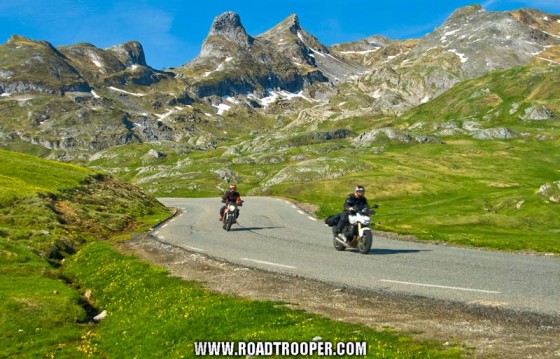
Col du Pourtalet
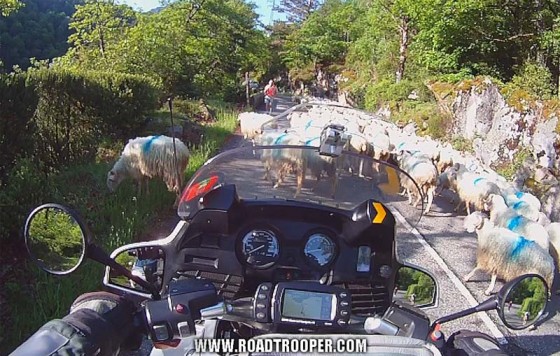
Traffic – Col du Pourtalet
The French side of Col du Pourtalet is really worth a ride, the higher you get the better the road and views. About half way up I can’t resist the urge to pull over and soak my feet in one of the most beautiful icy cold mountain streams I’ve ever seen. As the sun rises and floods the chilled valley in warmth I make a rough sandwich of French baguette, Spanish chorizo and a local goats cheese and thought, it does not get much better than this! When I’m old and broken I hope I will have the wits about me to remember days like these so I can bore the tits off the nurses in my nursing home.
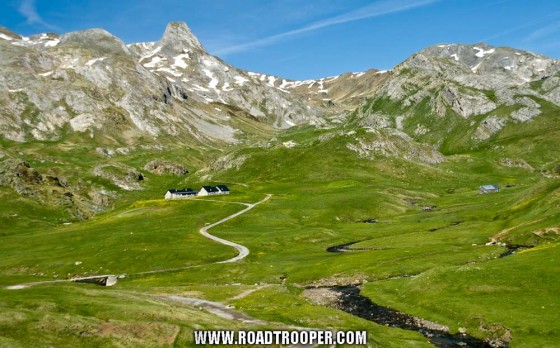
Col du Pourtalet
I stop off a few more time’s for photos as I made my up to the summit to the Spanish border where the road broadens and becomes Spain’s N-136, just past the ski slopes I find a petrol station and the reason for my ride up here – ye right ![]()
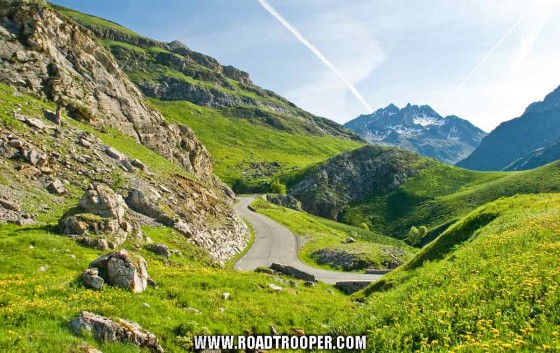
Col du Pourtalet
Col de Marie Blanque
I decide to return back into France the way I came to find the Col de Marie-Blanque which is a low pass but provides a great ride through postcard pastureland and woodland, but more to the point it is my route to the Col de la Pierre St. Martin recommended to me at the hotel. At the village of Arette I take the D132 which starts off as an unassuming typical little country road winding through farmland with absolutely no indication as to the thrilling, adrenalin boiling, utterly unforgettable roller-coaster that it will become.
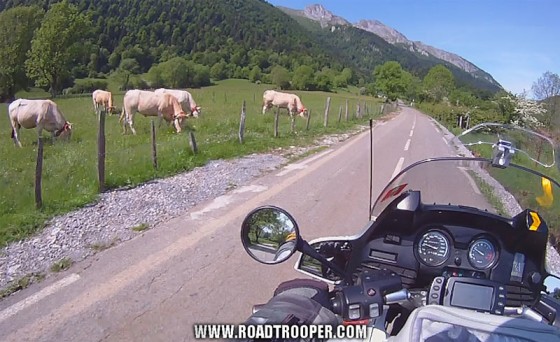
Col de Marie Blanque
Exiting farmland pastures the D132 begins a hair pined climb through forest, the road surface is good but gets a lot of debris if it’s been raining heavily. After about 4km of forest road I broke the tree line without warning and emerged quite literally on top of the world, and for the 3rd day in a row my senses are bitch smacked into overdrive as the most perfect stretch of black top you could wish for rolled out.
Col de la Pierre St. Martin
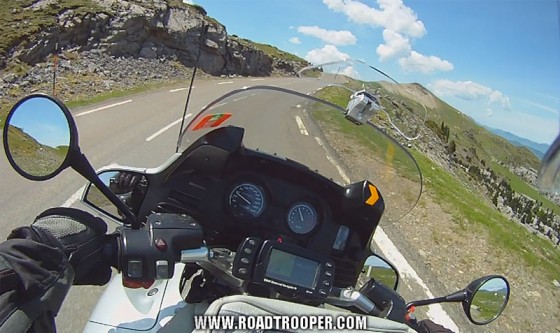
Col de la Pierre St. Martin
This road is a thoroughbred developed (with EU funding) by God Himself, who as we all know is a devout biker.
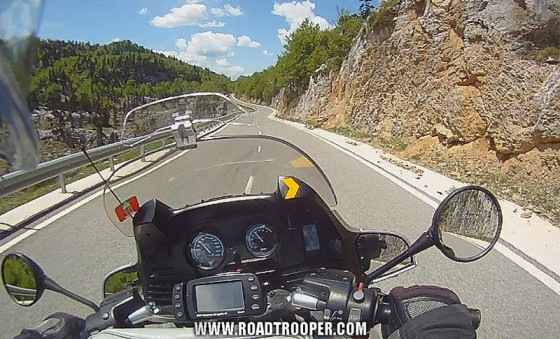
Col de la Pierre St. Martin
Beautifully fast sweepers wind over the top of the Pyrenees and it’s all mine! I’d passed only one car in the last 2 hours, unbelievable, and as I pull over to take a few shots I might as well have been the last man standing in a post apocalyptic world. I looked north over the peaks into a France now hidden under clouds, which themselves are far below me, I stay an hour just staring and listening to the purest sound of all – emptiness.
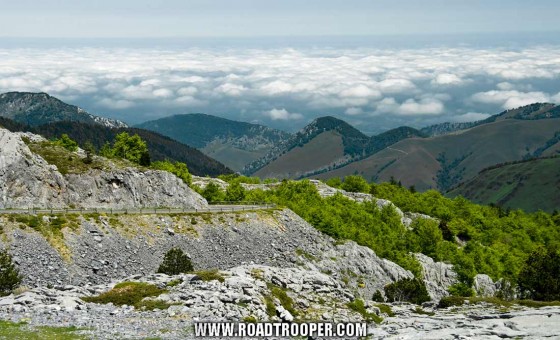
Col de la Pierre St Martin looking north into France
Time is ticking so I saddle up for the run back down, but before I did I decide to take a quick run up to the summit for a few last photos, unbelievably however the D132 becomes smoother, wider, faster and utterly addictive.
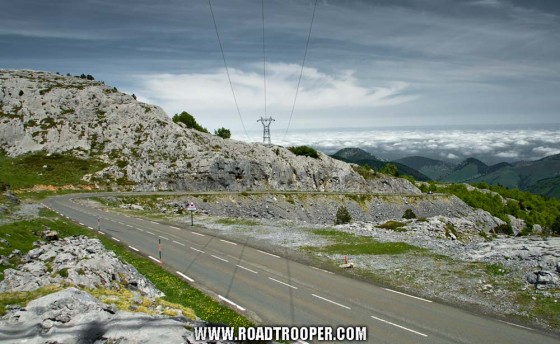
Col de la Pierre St Martin looking north into France
Rarely do I get a chance to open up a bike the size and weight of the old RT, but this was irresistible, there was no way I was turning back now and I go for it! I glide over Pierre’s summit and flash past a road sign in Basque announcing I’m now on the NA-1370 and entering the autonomous region of Navarra. I pull round a perfectly sweeping corner unveiling miles of silvery banked corners winding far below me into Navarra’s beautiful Valle de Belagua.
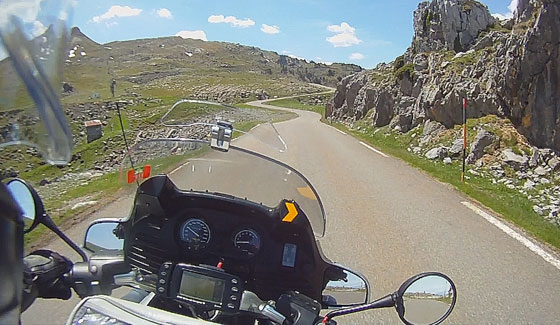
Col de la Pierre St. Martin
Hardly had I time to register where I was going, or what a shocking speed I was doing when I was forced to break for the first set of curves only to be met by a squadron of sports bikes blasting out of the corner. Someone has spent a lot of EU money on this road to bring skiers up here in winter, but I wonder if they intended it to be a MotoGP racetrack for 2 wheeled speed freaks in summer? I don’t know who made this road, but I thank you…
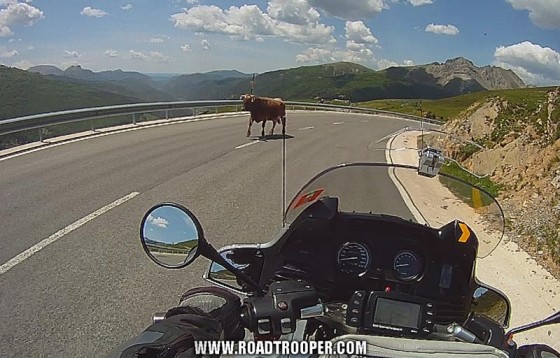
Col de la Pierre St. Martin
The Na-137 will tempt you to utterly disregard the speed limit but it has hidden dangers so don’t get carried away. There are few blind corners, and there are no trees so the road ahead is clear and easy to spot danger, but even so I rounded one corner only to come barrelling down on a lone, wandering cow. What the bloody hell it was doing there I’ve no idea as I’d seen no sign of cattle on the mountainside. About 10 minutes later and further down the road I came across a Guardia Civil 4X4 out looking for trouble.
Porte de Larrau
I’m tolled the local French bikers will ride the D132 south over the pass into the Valle de Belagua in a rather sedate manner whilst looking out for the GC’s, if none are spotted, they will turn around and blast back into France at speeds that would scare Rossi.
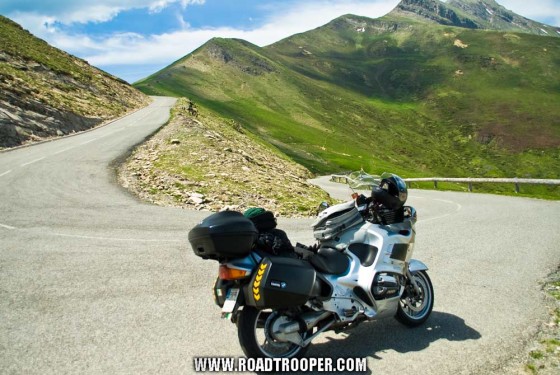
Porte de Larrau
I make my way south to Isaba then west via the Na-140 to the NA-2011 and re-cross the border for the 7th time in 3 days via Porte de Larrau. This pass is stunning, but the ride is nothing compared to the unadulterated magnificence of the epic Col de la Pierre St Martin. The ancient (pre Roman) town of Isaba is worth stopping in for lunch or a wander around the ancient buildings, it’s a real little jem and worth the effort.
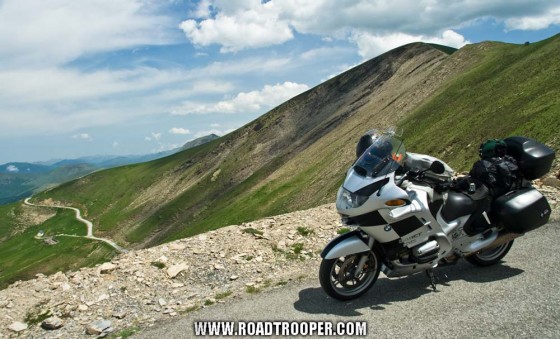
Porte de Larrau
As I made my way down into Basque France to find food, beer and bedding for the night I dreaded the thought of heading back north towards Roscoff the next day. Luckily my melancholy wore off after I found the marvelous Auberge de L’Étable at a non descript of village. The rooms are a bit outdated but clean. The real treasure is that it has a good restaurant (try the duck) and a bar that’s as good as any found in Ireland.
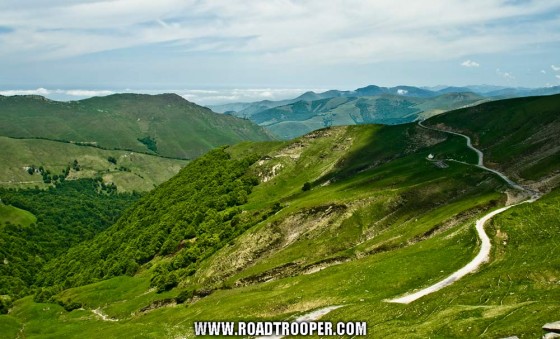
Porte de Larrau
My waitress and bartender for the evening was a very attractive and friendly French lass clad in a tight, thin, white t-shirt who gracefully saw no need in wearing a bra. Bloody marvelous! She also seemed as happy myself as I was the first Irishman she’d ever met.
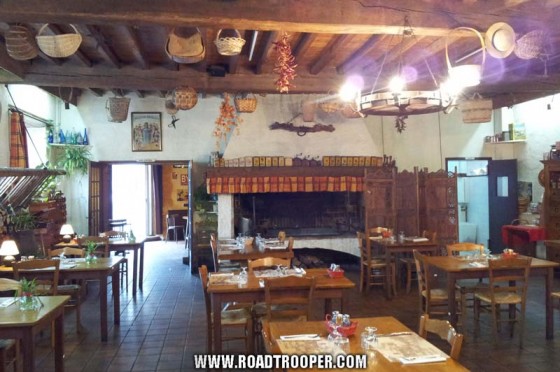
Le Auberge de l’Etable
Unfortunately I also took a liking to their local Basque beer called Aker Beltz which, at 5.5% proved to be rocket fuel and for the life of me I cant remember her name. Oh well, at least I remember most of the evening…
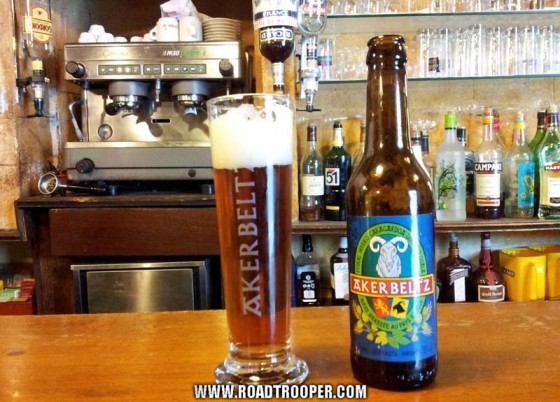
Le Auberge de l’Etable. Be careful of this stuff, it’s bloody rocket fuel!!!
So, my first true exploration of the Pyrenees had been an emotional roller coaster of a success, and the Pyrenean roads suited the R1150RT better than the endless tight hairpins and rougher roads of the Alps.
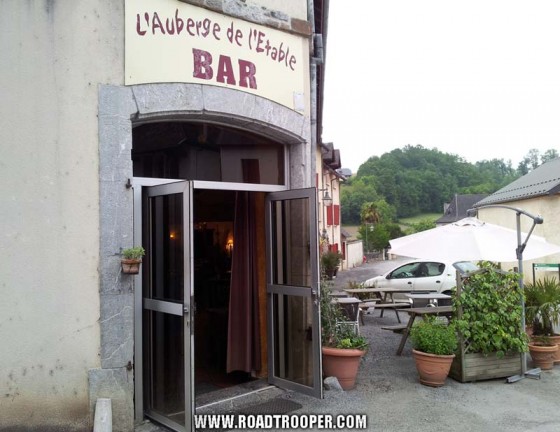
Le Auberge de l’Etable. It’s not much to look at from the outside, but it’s as good a place to stay as any..
It’s hard to compare the Alps to the Pyrenees, the Alps are higher, have a more grandiose and jaw dropping splendor, and of course the Alps can take a life time to explore properly. But the Pyrenees are more condensed, having a character all of their own with more flavor, more history, more cows, more weather, more extremes, greater contrasts, more changeable landscapes, more bra-less girls, and interestingly almost as many languages spoken. Happily I have yet to explore the Pyrenees further still, not that I really need another excuse to return, and I will in 2013!
Dont forget you can download this route as a GPS file or Google Map on the download section.
Safe riding…..
Denis Smyth
A foot note to this trip including a “very” brief and probably inaccurate history of the Basques and the Guardia Civil which should only be read if you have absolutely nothing better to do.
I’ve mentioned the Guardia Civil before and you might at this stage be thinking that I’m exaggerating things, especially those readers too young to remember General Franco and his relationship with the GC. I have on occasion advised lads heading into Spain on bike trips, and been laughed at when cautioning them to keep their heads if stopped by the Guardia Civil. So if you will forgive me I shall try to explain the rather big difference between the GC’s and the police forces most of us are more familiar with, unfortunately to understand it I have to subject you to a history lesson ![]()
Franco was Spain’s dictator, from 1939-1975, a self professed Nazi who idolized Hitler. Unfortunately for Franco Hitler thought Franco a buffoon and rightly so as Franco showed no understanding of the modern warfare Hitler’s Condor Legion unleashed on the Basques on Francos request. It’s was the Condor Legion responsible for the horrific bombing of Guernica on market day in April 1937 after which the GC’s helped to “clean it up” so it officially “never happened”. It should be noted that Guernica was only one of many towns that was destroyed by the Condor Legion, at the time the Spanish government insisted to international press that the Basques must have blown up their towns themselves. It is estimated that a minimum of 1,600 civilians were killed in the 3 hour bombing of Guernica but as it was market day it was likely to have been far higher.
It will never be known how many died as the German bombers dropped a payload of both splinter-shrapnel bombs to maximize the carnage and incendiary bombs to burn the evidence, and between the bombings fighter aircraft machined gunned the streets and fields for good measure. After the bombing Franco categorically stated that it never happened and for 40 years Spanish children grew up without any record of it in their history books. It should be noted that Germany later apologized for this, the Spanish government has never apologized!
During the bombing the Guardia Civil bravely helped the German pilots by working as spotters and at great personal risk defended the surrounding hills by shooting civilians freeing the carnage. This little bit of history is still in the minds of all Basques and today it still remains a major issue between the Spanish Basques, the Spanish/Madrid government and the Guardia Civil.
Franco hated the Basques and distrusted the northern Spanish regions and banned the speaking of Basque (Euskara), Aragonese or Catalan languages, punishable by lengthy prison sentences and torture administered by the GC. Even today the GC is plagued by reports of torture and prisoners experiencing inexplicable and fatal “accidents”.
One of the GC’s main purposes is the security of rural areas where there is unarguably an increased risk of police violations of individual civil rights through lack of supervision and accountability. Franco used the GC as a brutal means to hold Spain together, torture was common practice right up to his death in ’75 and into the 1980’s with the GC repeatedly refusing to acknowledge letters of protest from EU leaders, including the Pope to stop the use of torture! The practice did not officially stop until Spain joined the EU in 1986, but old habits die hard and don’t forget, there is a distinct lack of supervision and accountability in rural areas.
More recently, from northern Navara through to the Basquelands was from the 1980’s to around 2004 the most heavily policed area in Europe with 7 Guardia Civil officer’s per 1000 people. With the arrival of the EU and free trade the cross border smuggling, for which the Basques were famous for has stopped and thankfully ETA has also now chosen a political means to a Madrid free homeland. But there is still a massive amount of Guardia Civil around, even in what many would consider – the middle of nowhere.
The GC’s are still for the most part what they have always been – soldiers. They are not like the police forces in other EU states in many ways as they have a very different history and purpose. They are as well trained in weapons and tactics as the Spanish army, have a strong military background and specialise in anti terrorism, internal security, anti smuggling/drugs and they also run the prison system. They’re the equivalent of a federal military-status police force, military police or a republican guard and have served in UN backed operations in Bosnia and Herzegovina, Angola, Congo, Mozambique, Nicaragua, Haiti, East Timor and El Salvador. Suffice to say they are very serious hard asses and don’t take any shit from anyone! You’d do well to remember that and avoid getting on the wrong side of them.
If this is the first you have heard of any of this it’s unsurprising as Spain was utterly ostracized from Europe all through Francos rein. During this period most of the Spanish population wallowed in starvation and the deepest poverty mirroring that of Africa’s poorest nations thanks to Franco’s economic ineptitude. But as Franco was “persona non grata” Spain was completely ignored by every other country in Europe, separate and alone in it’s state fascism. With little information coming in or out of Spain until the beginning of the tourist trade in the 1970′s it’s hardly surprising little is known of this period or the GC’s involvement.
Today the Spanish government and everyone else prefers to pretend it never happened as we are all now best mates. Of course Spain’s government old guard (the lads partly in charge of the GC) still have meetings and practice the Nazi salute, but hey, you cant teach old dogs new tricks. This may be ancient history to some, but I remember well my first vacations abroad in Franco’s Spain and the chaos in the airports when ETA blew something up in revenge for a GAL assassination, GAL being Spain’s state funded and sanctioned death squads (mostly ex GC’s and mercenaries) who roamed the Basque regions attacking civilians. What a bloody mess all that was and none of it was justified! It’s all over now thankfully, but one can understand that for everyone in the area the memory of those days is far from forgotten.
But how does all this history affect you?
Firstly the GC can and will stop you for no reason and look for any excuse to fine you which can only be payable in cash or they will impound your motorbike, but to be fair the same can happen now in almost every EU country for serious traffic violations. It is your right to ask for a receipt, however in Spain this will likely annoy the GC on that lonely rural road as they would rather pocket the cash. It’s up to you if really want that receipt, but if they don’t offer it I would personally choose not to ask for it. I really dont care where that money ends up as long as I’m on my way.
Secondly they are trained to hit first and ask you questions later when you are secured in a private jail cell, if you argue with them you will regret it. If you show any aggression what-so-ever you will probably end up needing medical attention while you’re locked up for 3 days of interrogation or until you can prove that you are not a threat to the state. Remember, these guys run the prison system and can throw you straight into a prison cell with little paperwork to slow the process unlike the UK or Ireland for example.
The GC are not very popular, especially and understandably among the Basques and have been repeatedly targeted for attacks, therefore the GC’s are always on edge, so while you are armed with your civil rights, they are armed with guns and batons and have a questionable respect for your civil rights, have questionable supervision and are trained for combat rather than public relations. The truth of this statement is of course arguable. It is based mainly from my own experience as well as talking to both French and Spanish from both sides of the Pyrenees border and the Spanish further south where I lived for 4 years.
Strangely the French opinion of the GC is a lot lower than the folks living on the Spanish side. I suspect the Spanish side are just used to them and don’t know any better. Either way, I think the dislike and mistrust shown to, and given by the GC is historically based, and that history is extremely recent, give it another generation and it will become a fading memory as it is with most disputes.
I should also mention that I have never personally witnessed, nor had any truly bad experience with the Guardia Civil during all my time in Spain. However things could have gone bad on a number of occasions if I’d acted disrespectfully, un co-operatively or aggressively.
If you have your documents in order, your bike is road worthy, your dipped headlights on and you don’t push the speed limit then you have nothing to worry about! If you are stopped be calm, polite and do as they request, basically just use your head and don’t be a ass. Although if you are one of those lads that likes to put stickers on your panniers you might want to leave any addition of a Basque flag sticker until you have crossed back into France or risk “special” attention.
Don’t let this put you off visiting this fantastic area with great roads, wonderful people and beautiful countryside known for producing some of the best chef’s in the world, you will love it. Most of the Basque nationalism you might hear about is blown out of proportion by the media and usually revolves around a few pissed off idealist college students with sand in their vaginas. But students everywhere are always pissed off about something, hell 25 years ago I was one of ‘em!
The Basque’s have in the recent past been labelled as separatists but nothing could be further from the truth, historically they have been more pro EU than anyone else. Some Spanish Basques still want more autonomy from Madrid, but this process is both utterly peaceful and has a strong valid reason based on the Basques historically and culturally different system of self government. Arguably ETA were separatists, but were as separate from the Basques as they were from any rational political group.
Yes the Basque’s have their own language and are proud of it as they should be but are no different to the native Gaelic speakers of Ireland, Wales, Scotland or Brittany. There is a discernible cultural border between the 7 provinces of Basqueland and the rest of Europe similar to the difference between Brittany and Provence, or Scotland and England. It’s that difference that should be protected at all costs because that is one of the most enjoyable and key aspects of motorcycle touring. I mean, what the hell would be the point of riding a motorbike 2,000 km, pitting oneself against Mother Nature, paying for over priced petrol amongst other things to visit a place that was exactly the same as my own back yard?
The both sides of the Pyrenees and the Basquelands are tripping over themselves with magical cultural borders, add in the regions world class roads and you basically have yourself a touring destination that cant be missed. The Basquelands are open for business guys and girls, and as a destination for bikers it simply has to be on your list of regions to explore as it’s as un miss-able as the Alps.
I’m going to shut up now before I’m accused of being an historically inept twat and a professor of bollox in the university of who the hell cares.
Safe riding!
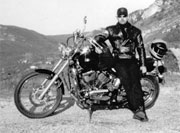







Hi Dennis, what time of year was this Pyrenees Tour and what months would you say will be free of any snow issues?
Thanks
Steve
Hi Steve,
I did this trip in the last week in May. From the end of April or early May almost all the passes are open. Tourmalet is the highest pass and therefore usually the last to open which can be anywhere from early/mid May to the end of May or very early in June but that is rare.
The French are very good at getting the tourist passes open as soon as the last snow has fallen and most of the passes into Spain are open all year. You’d be safe enough planning a trip starting mid May. But there is always a risk that Tourmalet wont be open til the last week in May.
The higher areas start getting real cold from end of Oct, from Nov your into the snow again on the higher passes.
Hope this helps..
Denis
Thanks. Bang on
Hi Denis,
I read your review of the Col de la Pierre St Martin with great interest as I rode it last summer on my 690 Duke. Your description entirely echoes my own experience and your use of the word racetrack is certainly not over the top. I rode it from Spain into France and thought it was the stand-out road of the whole trip. Just a shame I never got to see that barmaid.
I’m off to the Dolomites 1st week of June after catching the bug in the Pyrenees. I’ll be spending a few days in the area then heading to the Aosta Valley and the Mt Blanc region before heading back to Calais – 8 day trip. Can’t wait.
Steve
The Aosta valley is a really nice spot, the views of Mt Blanc are hard to describe. Glad you had the same experience with Col de la Pierre St Martin as I did, like yourself it was the highlight of my trip last year, although Col d’Aubisque is also imbeded in memory for other reasons
Enjoy your June trip Steve and safe riding..
Denis
just wanted to say a massive thanks for all these routes. i’m doing a trip from the uk down to the pyrenees in early september and your reports, routes and videos have provided me with an excellent guide to follow. it’s my first time there this and am sure i wouldn’t have found half of this stuff without your guides. big respect!
safe riding
adam
Hi Adam, thanks for the vote of confidence, great to hear the website was of help. Best of luck with your 1st trip to the Pyrenees, it’s an amazing area of Europe and a bikers paradise for sure. I’ll be back there again myself around the 9th of September for a week or so to explore some new roads, so if you see a desert camo F800GS Adventure on Manx plates be sure to say hello and we’ll have a coffee.
Safe trip
Denis
hi denis. i’m aiming to be in the pyrenees from the 7th-10th of september so we should overlap. catching a ferry back to blighty from bilbao on the 11th. i’m on a black daytona 675, on a GB plate, so will be strictly tarmac only for me, all being well will be using your col routes and the n260 to keep me entertained. would be cool to bump in to you. will keep my eyes peeled.
will be using your col routes and the n260 to keep me entertained. would be cool to bump in to you. will keep my eyes peeled.
nice one mate
ad
Denis,
May I ask you a question. I’m trying to decide between leathers and textiles for the Pyrenees trip in September. From your experience which would be more suitable? I’m trying to take potential for rain into account plus variables in temperature according to altitude and which side of the mountains I’m on. Your advice would be much appreciated!
Adam
Hi Adam,
The weather in the Pyrenees is subject to varying climates. The French side, especially the Pyrenees-Atlantic region of Basque France is influenced by the Atlantic, so rain, sometimes torrential rain is fairly common. So this area in September can see it at around 16-25 degrees C and very high humidity. The Spanish side is far drier and usually 5 degrees C warmer over-all. So the region of the lower Pyrenees in Navarra or north western Catalonia (Jaca-Sort) can be baking hot, anywhere between 20-30 degrees C even in late Sept.
On top of that, as with any mountain region and especially these days with unpredictable weather patterns, anything can happen. Last year saw me riding this area starting off in the mornings under hail stones and 6 degrees C, the afternoons under baking sun then back to rain and 13C in the evenings.
Over the years I’ve found September to be the best time for touring as extreme high/low temperatures 25C+/10C or below and long periods of rain are unlikely. Due to this regions inherent varying climatic regions, more-so than the Alps, wearing leather can be problematic.
Certainly a one piece cow hide leather suit could easily be the worst choice, if you get good weather your going to be very uncomfortable and have problems staying hydrated. However a 2 piece summer leather suit like the Alpinestars Orbitor would work if you match it up with waterproofs and base layers.
Ideally though textile gear is far more flexible and better suited for touring, and higher end textile gear offers almost as much protection in case of a off. Whatever you choose the key component is venting panels which help keep your core temperature down. Match this up with high wicking or mesh base layers (not cotton t-shirts) and you will be far more comfortable.
Everyone has differing temperature tolerances, some can’t deal with heat, some the cold etc. I’m happy enough in cold and wet conditions, being Irish I’m used to it. But the Spanish heat badly affects me to the point I won’t ride there in July and August. If you’re anything like me invest in either the Rev-it or BMW Cooling Vests as these are brilliant for when it gets really hot.
The Rev-it Defender jacket / pants or similar is an excellent option and well worth the money as it really is an all weather system from winter in Scotland to summer in Malaga. Mid price range textile gear like this is by far the most popular for touring, in the event of an off it’s not as protective as leather, but it’s by far more practical and for me it’s worth the compromise in most cases. If however you’re a speed freak on a R1 then leather might be the better choice
But for me motorbike touring is about slowing down, exploring, enjoying the views and culture of the area. High speed off’s and sliding down a road for 30 yards should not be a high risk so leather should not be needed. A more likely accident scenario would be a low speed off where a patch of gravel, a deer, hiker jumping out of a forest or an old French dude pulling out into your path from a hidden right side lane a common culprit to an off. In this case good abrasion resistance is needed, but back, knee, elbow protection is what is most important, all of which good textile gear offers.
The gear I use is on the higher end of the price scale, but with the amount of touring I do investing in high end gear pays off. I’ve upgraded from the BMW Rallye II and Rev-it Defender gear to the Klim Badlands Pro gear which is a different system as it’s just a Gore-Tex Pro technical shell. This system does not incorporate separate removable waterproof and thermal layers. It’s a highly protective, abrasive resistant Gore-tex technical out shell with and excellent venting system. So vents open when it’s hot which I can close on the move if it starts raining and ad my own choice of base layers to suit the temperature. The Klim Badlands Pro gear suits both road and off-road touring in any weather and with the Gore-Tex on the outside the jacket does not absorb water and get uncomfortably heavy and cold like the other systems. This system also decreases the amout of gear I have to pack. So the higher up the price scale you go in textiles the more flexibility you get.
Hope this helps with making the choice that suits you best,
Denis
Denis,
You’re a total gentleman. Thank you for that comprehensive reply. I think I’ll go with my textiles as you suggest. I can’t be arsed with stopping to take off/put on waterproofs over leathers depending on the weather conditions. And as you say, if it gets really hot on the Spanish side I’ll overheat. My textiles are dainese goretex so should see me ok for all likely weather. You’re exactly right about the spirit of touring. A lonely mountain road is no place for me to push my comfort zone! I wore leathers to tour before but that was largely because I was dropping in at the nurburgring. Whenever I encountered 28 degrees plus they became a bit of a mare.
Fingers crossed we get a long dry spell for September. I think I will prioritise certain roads on the good weather days to make sure I see the best of what’s there. Your blog is invaluable to this so thanks again.
I’ve decided to wuss-out of the motorway slog down to the mountains and have booked myself and the bike on a train from Paris. This is going to give me an extra day in the mountains and should mean I’m fresh at the beginning of the fun stuff. Little nervous about handing my bike over and not seeing it again for 12+ hours but sure they know what they’re doing, hopefully!
Thanks mate
Ad